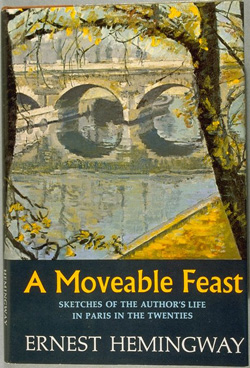You have no items in your cart. Want to get some nice things?
Go shopping
Hemingway is used as a barometer for the manly or literary class. He is everywhere, his name employed as an easy endorsement. In Spain, Cuba, France and the United States you will stumble on “the café where Hemingway wrote”, “the bar where Hemingway drank”, “the drink Hemingway invented”.
I have fallen sucker to that same trick, no matter how honest, and tried to steal a little of what it meant to be the great man. This might help explain, on a recent trip to Paris, my decision to stay a few doors down from Shakespeare & Company or to eat at certain bistros. My reading for the trip would, of course, also take inspiration from Hemingway.
A Moveable Feast is a collection of memories of Hemingway’s time in Paris in the twenties. It is almost a linear narrative, almost autobiography, almost a collection of short stories; it defies easy categorising. It is true to his laconic polish and an interesting glimpse into the lives of “the lost generation”, though it also contains a nice story that rejects that label.
Our protagonist is, of course, Hemingway, and readers of his novels or stories will clearly recognise him as the same man at the centre of all Hemingway’s writing. This book clarifies something that I always suspected: he only ever wrote thinly veiled versions of himself. There are moments that seem like parody, the absence of the barrier of fiction between the reader and Hemingway exposing him as too serious, and his fixations on being true and good make you wonder whether he is laughing at your expense.
At its best, each chapter of the book works as a freestanding short story that deal with familiar themes against the backdrop of Paris. I can think of no better writer of short stories, no better time period to place them in, no better city as a backdrop. These stories deal with gambling, writing in cafes, skiing in the Alps, boxing and making love—the usual stuff for Hemingway.
The narrative that holds the stories together and the characters that populate them are interesting to anyone familiar with the modernist period. Hemingway gives us his opinions of Ford Maddox Ford, Fitzgerald’s flaws and anxieties, Pound’s attempts to learn how to box, Stein’s jealousy. They are described in a confident and personal manner, name-dropped throughout. I feel very un-literary admitting that some of my favourite parts of the book were the celebrity memoirs and gossip column revelations. What avid fan of The Great Gatsby wouldn’t want to know that Hemingway soothed Fitzgerald’s fears about the size of his penis by taking him on a walk amongs the Greek statues of the Louvre?
For anyone with an interest in the twenties or artists of that period, the book is essential reading, but Hemingway’s writing also makes sure that the general reader will take something away.
First published in 1964. A restored edition was published in 2009. Available in hardback, paperback and ebook from Random House.




